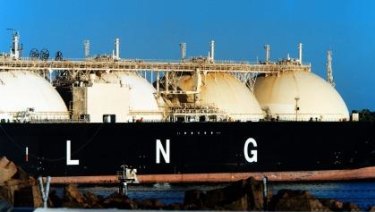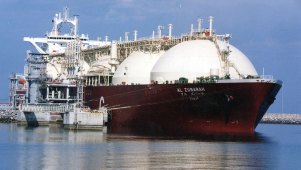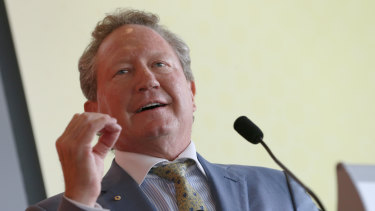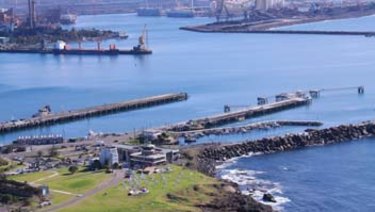by Ganesh Sahathevan
Vitol-Shell's Viva Energy bet on fuel shortages in Australia is paying off with a AUD 450 Million per year, floating rate 12 year contract with Australia's Department Of Defence
Australian company Viva Energy Refining has been awarded a $450 million per year contract, subject to market fluctuations, for an initial six years which may be extended to 12 years.
The contract includes the supply of the specialist military aviation fuel for Navy helicopters, known as F44, and could be worth an estimated $2.7 billion over six years.
Minister for Defence Industry, the Hon Pat Conroy MP, welcomed this announcement saying, “The Albanese government is proud to be supporting Australian industry and jobs rather than importing specialist military aviation fuel.”
This fuel will be produced at the Viva Energy refinery in Geelong, Victoria, one of two remaining oil refineries in Australia, where around 1,000 people are employed.
Minister Conroy also stressed the importance of this commitment for Australia’s national security and resilience, saying, “Coming after years of declining local oil refining and fuel production, this will be good for Australia’s defence, good for Australia’s energy security, and good for Australian jobs.”
Defence currently imports this specialist fuel and it has not been produced in Australia since 2013.
“The government is working hard to build a resilient fuel supply for Defence and to strengthen Australia’s national security — and this domestic fuel supply contract will contribute to this,” Minister Conroy added.
TO BE READ WITH
Saturday, February 22, 2020
World's sharpest, shrewdest oil, gas and coal traders, and Twiggy Forrest, counting on Australian governments to ban local production, enforce use of expensive & unreliable renewables, and force Australia to import, oil, gas and coal.
Vitol, Glencore and Trafigura are among the world's biggest privately owned oil, gas and coal trading companies. They have done with their own money what ExxonMobil, Shell ,Chevron and others have taken more than a century to accomplish, with money from stockmarket investors. These independents have grown very large and very influential in about half the time (and less).
About a decade ago ,when Australian governments decided that refining oil here was not good for the environment, the independents began buying up old refineries to turn into import terminals.
Joining then is Australia's very own Twiggy Forrest ,in a JV with Japan's Marubeni (see story below).
Forrest to build NSW's first LNG import terminal at Port Kembla
By Cole Latimer
June 4, 2018 — 10.30am
Share on Facebook
Share on Twitter
Send via Email
Normal text sizeLarger text sizeVery large text size
Fortescue Metals chairman Andrew "Twiggy" Forrest’s Australian Industrial Energy will build a floating LNG import terminal in Port Kembla to bring more gas to NSW and Victoria as soon as 2020.
The regasification facility, which will cost between $200 million and $300 million to construct, will also be NSW’s first LNG import terminal.

The LNG import terminal will be the first in NSW.CREDIT:MICHELE MOSSOP
The Port Kembla terminal will import up to about 100 petajoules of LNG, which could meet about 75 per cent of NSW’s total gas demand.
AIE chief executive James Baulderstone said the import terminal would "solve the gas shortage in NSW", while NSW Minister for Trade and Industry Niall Blair called it a "game changer" for the state.
Advertisement
“From 2020, AIE plans to ship up to 1.8 million tonnes of LNG into Port Kembla. That’s enough gas to supply around 85,000 average homes for an entire year," Mr Blair said.
“NSW currently relies on various interstate sources for 95 per cent of its gas needs, which can be less reliable and more expensive. This proposal has the potential to provide long-term security of gas supply at competitive prices.”
AIE is also targeting Victorian customers.
"One of the reasons we chose Port Kembla is because it's at the intersection of the Eastern Gas Pipeline, so we can get gas into Victoria," Mr Baulderstone told Fairfax Media.
"Victoria is a much bigger market so that is how we get more volume. We've signed some Victorian deals already."
The majority of the gas will be provided to large manufacturers and businesses.
RELATED ARTICLE

EXCLUSIVE
ENERGY
Australia should import LNG if it wants cheaper gas: global expert
Add to shortlist
It comes after the Australian Competition and Consumer Commission forecast a looming gas shortage on the east coast of up to 150 petajoules, and the government last year threatened gas companies with a mechanism that would slash exports unless they secured more domestic gas supply.
The new gas terminal is a lower-cost alternative to proposed interstate pipelines and a cross-country, $5 billion West to East gas pipeline, which could also alleviate a gas shortage.
The location of the new east coast gas terminal came down to a decision between two sites - Port Kembla or the Port of Newcastle. AIE chose Port Kembla as it is closer to large consumers of industrial gas as well as existing pipeline infrastructure.
The terminal will have storage tanks capable of holding around four petajoules of gas, equivalent to between 10 and 12 days of NSW’s total demand.
For the second stage of the development, AIE is investigating the construction of a new gas-fired power plant. It is understood this could include either expanding on existing small-scale power plants nearby to provide more energy to industrial users, or building a new 750-megawatt power plant.
Mr Baulderstone said it planned to develop this power generation between 2020 and 2022.
The facility will see LNG carriers visiting Port Kembla around every two to three weeks.
Who is AIE?
Australian Industrial Energy is led by the former Santos and Duet Group executive James Baulderstone, and Stuart Johnson, the head of Mr Forrest’s gas business, Squadron Energy. The consortium has the backing of Japanese firms Marubeni Corp and JERA, which is the world’s largest buyer of LNG.

Fortescue chairman Andrew Forrest. CREDIT:BLOOMBERG
JERA will supply the gas while trading house Marubeni provides infrastructure financing.
"The $200 million price tag is relatively small capital to these investors," Mr Baulderstone said.
AIE has already signed 12 memorandums of understanding with industrial users for the supply of gas but declined to name these groups.
JERA’s fuel business development and gas and power development senior vice president, Gaku Takagi, said the facility would be able to bring cheaper LNG to NSW.
“We believe we can make a major contribution to NSW and east coast energy supply competition and security,” Mr Takagi said.
Mr Baulderstone said AIE would work as quickly as possible to get the facility off the ground as the rising price of gas stretches Australian businesses' operating costs as they seek new sources of gas supply.

The floating regasification terminal will be built in Port Kembla Harbour.
“In recent times, wholesale gas prices have doubled, and in many cases tripled, in NSW. In addition, many industrial companies are now unable to secure gas for any period longer than 12 months,” Mr Baulderstone said.
“AIE is well placed to deliver firm, long-term gas on highly competitive pricing and terms as a soon as 2020.”
The development is a boon for NSW, which has traditionally imported gas for industry and power generation from Queensland.
AIE is planning to lodge its development applications within the next few months.
The project is similar to AGL's $250 million floating LNG import terminal and jetty proposed for Crib Point, in Victoria, which is slated to begin construction next year.
Share on Facebook
Share on Twitter
Send via Email
License this article
ENERGY
ANDREW FORREST
Cole Latimer
Covering energy and policy at Fairfax Media.



No comments:
Post a Comment